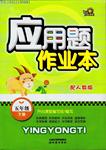题目内容
第三部分:阅读理解(共20小题;每小题2分,满分40分)
阅读下列短文,从每题所给的四个选项(A、B、C和D)中选出最佳选项
Sydney is Australia’s most exciting city. The history of Australia begins here. In 1788 Captain Arthur Phillips arrived is Sydney with 11 ships and 1,024 passengers (including 770 prisoners) from Britain. Today there are 2.5 million people in Sydney. It is the biggest city in Australia, and one of the most beautiful cities in the world.
There are over 20 fine beaches close to Sydney. Its warm summer climate and cool winter have made it a favorite city for immigrants(移民) from overseas. There are three things that made Sydney famous –its beautiful harbor, the Sydney Harbor Bridge, and the Sydney Opera House.
But there are many more interesting things in Sydney: beautiful shops and restaurants, for example, rows of interesting old houses built everywhere in the 19th century. Summer or winter, day or night, Sydney is an outdoor city.
Some Americans think it is very British. Some British visitors think it is like America. There is some truth in both these opinions, because Sydney takes from both the Old World-Europe, and the New World – America, and makes it into something that is neither British nor America but truly Australian.
1. The climate in Sydney is_____
A. hot in summer and cold in winter B. warm all the year round
C. neither too hot nor too cold D. cool all through the year
2 In 1788 Captain Arthur Phillips arrived in Sydney .
A. with some ships and more than 1,000 passengers
B. with 11 ships and only 700 prisoners
C. with 1,024 passengers besides 700 prisoners
D. with only more than ten ships and some helpers
3. What made Sydney famous?
A. Three things---the beautiful harbor, the Sydney Harbor Bridge and the Sydney Opera House.
B. Immigrants from Britain, the beautiful Harbor and ships.
C. Beautiful shops, modern restaurants and interesting old houses and seas.
D. The Sydney Opera House, interesting old houses and interesting restaurants.
4. The writer thinks Sydney .
A. is like America B. is very British
C. is neither British nor American but truly Australian
D. takes from Europe
【小题1】C
【小题2】A
【小题3】A
【小题4】C
解析

 应用题作业本系列答案
应用题作业本系列答案